Many of us have necessary but oh-so-problematic hardscaping transversing our outdoor spaces, hardscaping that stops the eye and keeps us from achieving that continuous, peaceful flow that we desire for our gardens. Some of you may have given up, creating pockets of annuals, ground covers and mundane shrubbery sandwiched between sidewalks, driveways and front porches. Deep down, though, you know you want something better, more cohesive and more beautiful. Let's see how to achieve it.
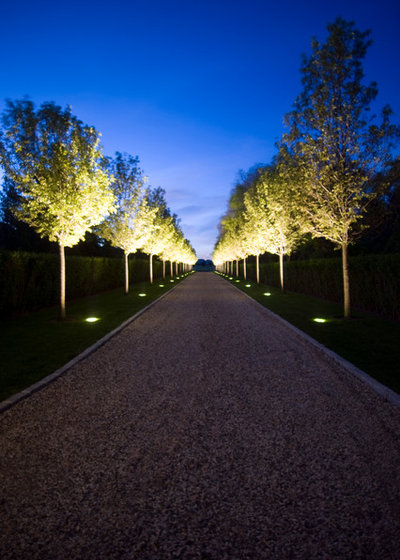
Perello Building Corporation
The problem of integrating hardscaping into the landscape traditionally was solved by employing symmetrical balance, such as through the use of allées. However beautiful these tree-lined avenues can be, though, most of us no longer live so formally, nor do we have the acreage to achieve this look. So what do we do?
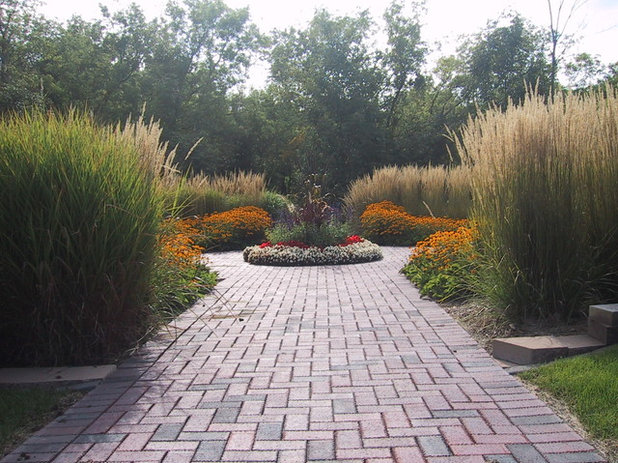
Designing Nature Inc.
Use traditional principles in new and exciting ways. This garden is a perfect example of an updated formal design, with plants that are very much in tune with the current aesthetic. Notice the formal lines and balance of this garden, but also notice the more informal plantings.
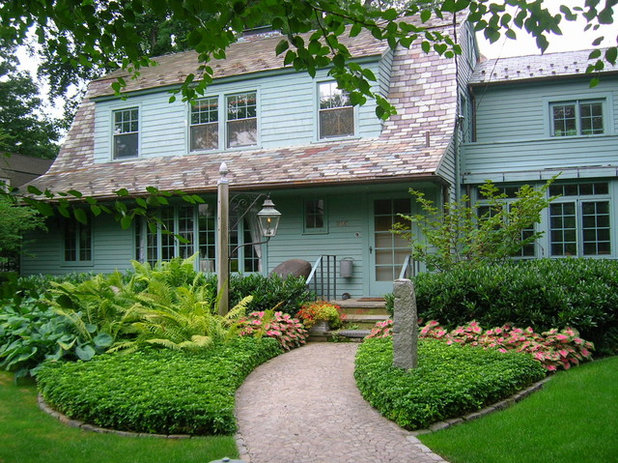
This front garden captures the essence and repetition of the allée but in an updated way that is within the realm of possibility for many.
The designer has employed the concept of asymmetrical balance; one garden bed is larger than the other but is weighted to look equal. The stone pillar mimics the lamppost, bringing continuity to the space. Notice how the caladiums (
Caladium sp, zones 9 to 10) are more prominent in the smaller bed on the right. Acting as a fulcrum, they balance the beds, making them visually pleasing. A carpet of ground cover in the foreground of each bed brings that additional dose of soothing continuity.
If you are not confident in your ability to lay out bed lines that seem to flow effortlessly across your hardscape, consider employing the use of a garden hose. Stretch it across your walkway and create a serpentine or curved line that makes sense to you when viewed from different angles. It's easier to change the hose than to redig your bed lines.
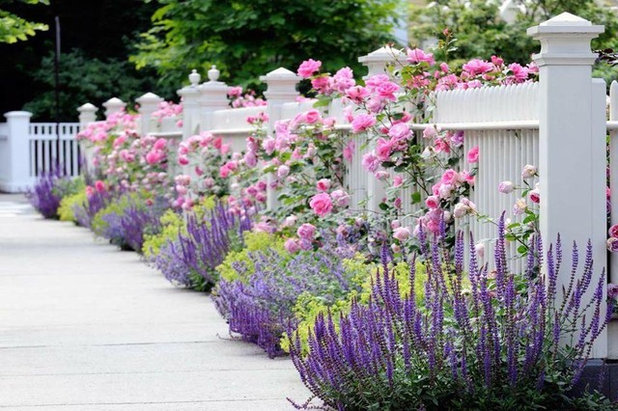
Denise Dering Design
Achieve balance through repetition and rhythm. This lovely garden evokes images of Victorian England. Notice how the salvias (
Salvia nemorosa 'May Night', zones 5 to 9) are planted in measured intervals. By doing this, the designer has achieved rhythm. The roses provide that soothing thread of continuity.
More gorgeous looks for a narrow planting strip

The Design Build Company
In the previous photo we can see only one side of the hardscape. Here we see rhythm alternating between both sides of the hardscape. Notice how both the boulders and the landscape lighting balance this stairway from side to side, pulling the eye up to the top in a pleasing way. Having a cute dog as a focal point never hurt, either.
The restrained use of boulders can be an effective tool in achieving continuity from one side of the hardscape to the other. Just be sure not to overdo it.
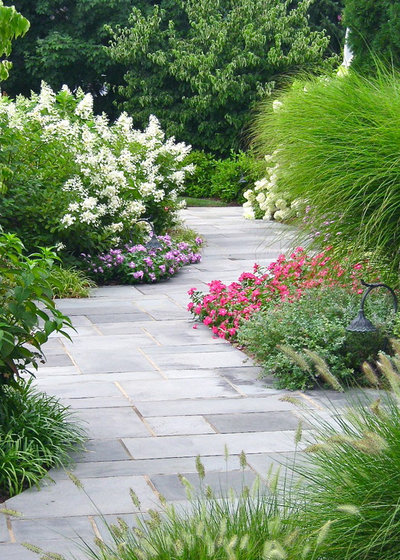
Liquidscapes
Allow plants to overflow onto the hardscape. The appropriate use of this technique will soften the edges of the hardscape and bring continuity from one side to the other.
Notice the repetition achieved in this garden through the use of ornamental grasses, hydrangeas and spreading perennials. Some maintenance and planning are required to assure that the plants never present a hazard to the visitor or look overgrown.
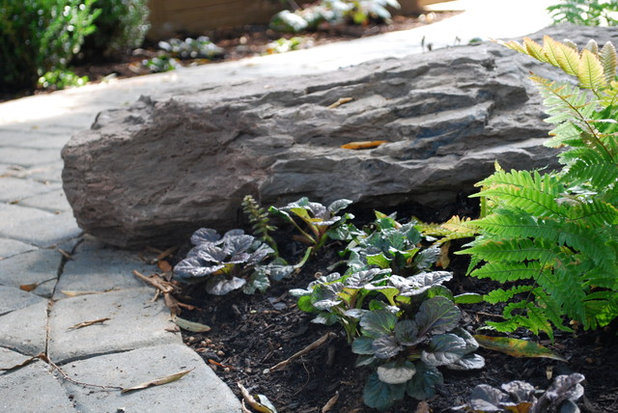
Jay Sifford Garden Design
Likewise, boulders can overlap the walkway slightly to create continuity from side to side. Do this safely to avoid a tripping hazard.

Blue Stone Woodworks
Integrate plants directly into the hardscape. Here the designer has both embraced and softened the hardscape by introducing a ground cover directly into the joints of the sidewalk. Notice how the appropriate use of this unexpected technique pulls the eye toward the house and creates an oasis in the midst of the walkway. Creeping and wooly
thyme (
Thymus cvs, zones 4 to 9) are especially suited for this purpose.
More plants for your pathways
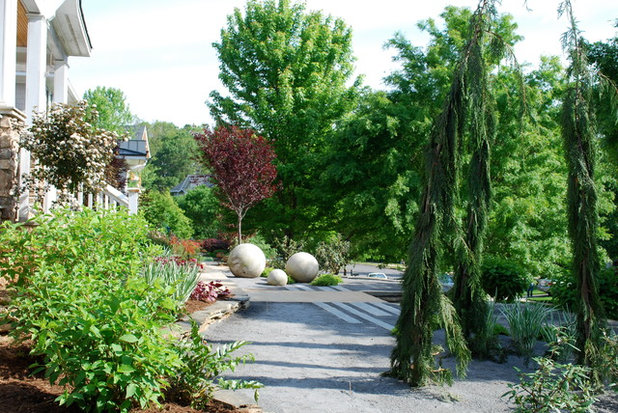
Jay Sifford Garden Design
Expand your horizons. Sometimes the eye remains too focused on the hardscape and needs help to see the big picture. The designer of this garden used bluestone planks of differing lengths and widths, placed opposite each other along a mundane concrete sidewalk, to pull the eye outward so it can experience the entire space. The use of similar colors and textures makes this technique effective.
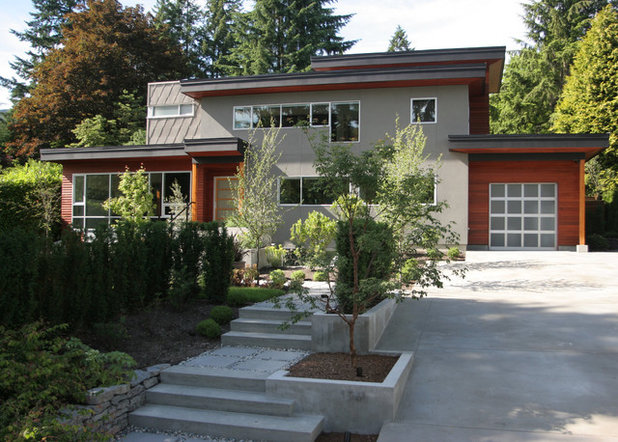
Portal Design Inc
Boldly embrace your hardscape. At times a bolder approach is the best approach. Here the designer has embraced the use of hardscaping by creating and wrapping planter boxes in the hardscape. The effective use of plant material helps to soften and balance this front yard. If this approach is too austere for you, consider softening the edges of the planters with a creeping and cascading ground cover.





